How to
How to Make a Website for your Business. Step by Step Guide
Published
4 years agoon
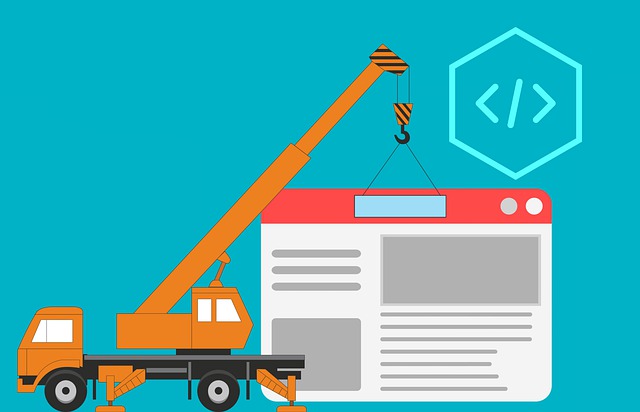

This post will teach you how to make a website for your business without taking anybody’s help. In this post, you will get several important tips that will allow you to build a perfect website for your business.
Now that you are prepared to make your very first business website, it is time to begin planning, but where exactly should you start?
Initially, let us understand a few things you want to consider before you start building your website.
The first thing you need to do is choose a platform on which your website will be built. For someone who has zero experience in website building, WordPress is among the most well-known choices. It is used by millions of web site owners and developers since it is free, strong, and comparatively user friendly. Even I use it for several of my websites.
Additional Free CMS options are Joomla and Drupal, which are also quite functional, but they require a marginally larger learning curve. Additionally, there are drag and drop choices like WIX, SquareSpace and Websitebuilder.com which provide a completely free version but do charge monthly charges for a fully functional site.
Now let’s dive into this post and learn how to make a website for your business without taking anyone’s help!
How to Make a Website for your Business From Scratch
Purchasing a Domain Name
Before you learn how to make a website, one Of the first things you’ll have to do is purchase a domain name. This is the internet address (URL) of your website.
What’s your focus? What will your website be known as? What’s your site about (your market )?
Use these replies to think of a title. Write down a few and check out online to find out if the one you need is available. You are able to obtain a domain name search on sites like GoDaddy, Namecheap, Domaincheap.com. You might even use a domain name generator, which will spin out titles based on keywords you type in.
It may require a few attempts to find a domain name you like that nobody has already purchased. It’s a great idea to connect with your organization, niche, or subject so that individuals will have a better idea about what your site is all about just by taking a look at your URL. In addition, you need to keep it as brief as possible so that it’s easy to remember.
Purchasing a domain name will probably cost a few dollars for a year. Several hosting service providers provide free domain names if you purchase a hosting plan from them. They provide search functionality where you can search whether your domain name is available or not.
Purchasing a Web hosting Plan
You can not have a site with no server. The hosting agency is where your data will be saved, in their servers. Based on how much space you want now and later on, it may be worth a few more bucks a month to make sure that your
website doesn’t crash or turn off in the future.
Remember that you will find free hosting solutions, which can be good for a personal site, however, they often don’t offer enough bandwidth to get a company site and the majority of them display ads in your pages. If you have a big website and expect it to have a lot of traffic, you should purchase cloud-based hosting. Otherwise, you can go for shared hosting too.
There are several hosting service providers. I have been using Bluehost for my hosting purposes. There are several tutorials provided by web hosting companies that will also teach you how to make a website with ease.
Updating Name Server Details for your Domain
The next thing you need to do is update the name server details for your domain. Go to your hosting account and search for your domain. If you are using BlueHost, you will see something like the image below. There you can see Name Servers.
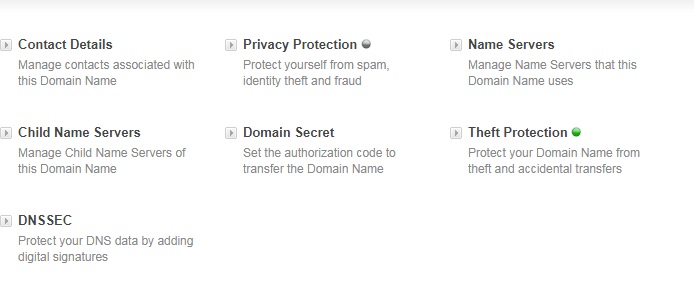

Click on it and enter the name server details. The name server details can be found by clicking on Name Server Details which is available on the same page. Just scroll down a bit and you will see something like this.
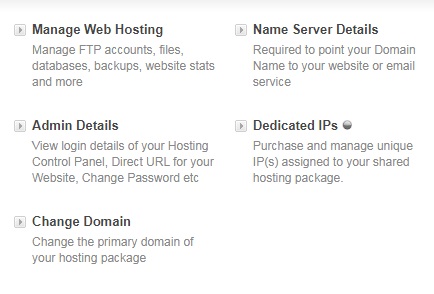

Once you update the name server details, it might take up to 24 hours for it to get reflected. It is possible that these changes are committed within an hour too. Next, let us learn how to install wordpress.
Installing WordPress on your site
This is sometimes set up with one-click from within your hosting accounts. You just need to navigate to the Softaculous app installer and proceed with the steps given below.
Step 1: Go to Softaculous app Installer from your CPanel and click on WordPress
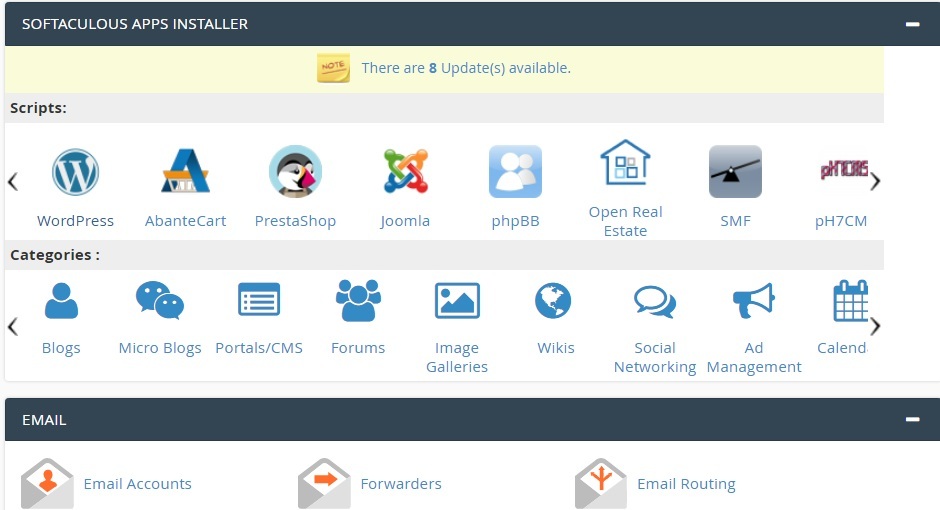

Step 2 : On the next screen click on Install Now


Step 3: Fill the installation details and other details on the next screen. If you want to install the site in the root directory, leave the ‘in directory field empty’.
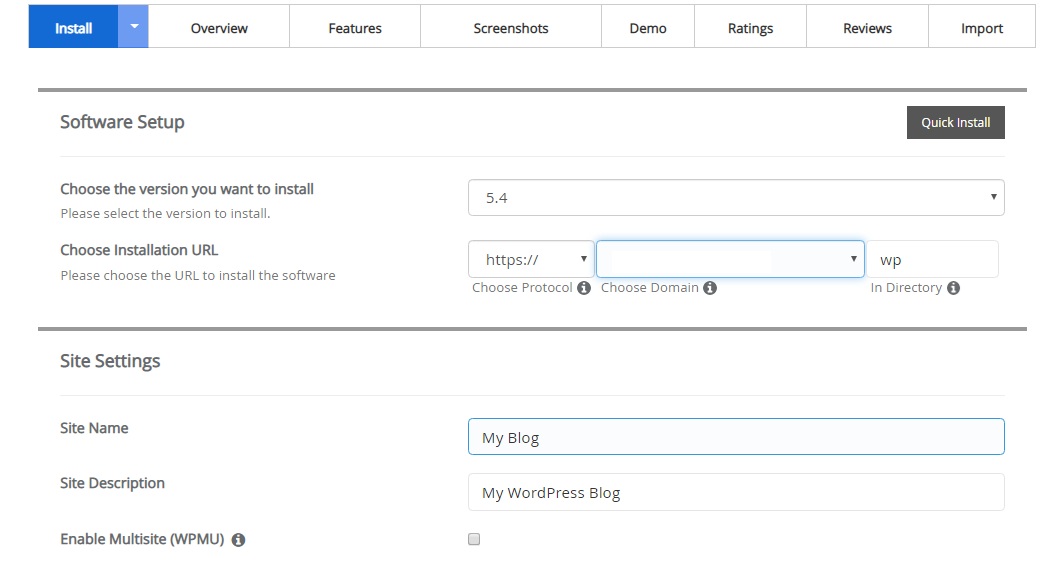

After you fill all the details, click on Install and within a minute, WordPress will be installed on your site. To go to your dashboard, go to yoursite.com/wp-admin and enter the credentials that you entered in the previous step.
From your dashboard, you can create articles, upload content, and more. There are numerous choices with WordPress you can produce a very simple site with just a couple pages or establish a full-fledged e-commerce website prepared to take earnings.
Start building your website
Installing WordPress doesn’t mean your website is ready. There are a few more steps involved. A WordPress website has a theme that gives a particular look and feel to it.
There are various free themes available. However, it is always better to purchase a theme because they provide various customization options.
There are various websites that sell themes. I prefer buying themes from Themeforest. It is a platform where theme creators sell their themes and plugins.
You can search for a particular theme and the website will throw search results matching your criteria. For example, if you want to make a newspaper website, you just have to type Newspaper in the search bar and you will get several options to buy from.
Check the review of different themes and the kind of support they provide. Try the live demo there and after you are satisfied, you can purchase the theme there.
Once you purchase the theme, you will get the installable files in the download section. You simply have to download the zip file and upload it to your site by going to Dashboard->Appearance->Themes and upload. Once the theme is installed, you will see various options to customize.
If you understand just a bit of programming, you may use HTML or CSS to alter the webpage to
look as if you need them to.
All these measures will operate for Joomla and Drupal too. In case you choose to choose a drag and drop builder, then they ought to supply you with the tutorials and documentation that you want to get your site up and running.
Fine-tuning the details of your site.
Even though you’re designing your site pages, it is a fantastic idea to maintain the”big picture” in your mind. It is the detail that can make or break your site. They are what distinguishes a fantastic site from a single which people click from after a number of seconds. When Readers see errors a few of them might overlook these, others might provide you an opportunity to fix them but the majority of folks will just proceed to another site.
That is true for everything from spelling mistakes to pictures that don’t load fast. If you’d like your visitors to stay around, then you need to have a web site that’s both practical and aesthetically pleasing. You might also need to ask a trusted friend to check out your job from a customer’s perspective to come across any mistakes you might have missed.
Here are a couple more tips that will assist you to create your site user-friendly.
A sitemap
Before you proceed with this guide on how to make a website, you need to know what is a sitemap.
What is a sitemap?
Simply put, a sitemap is a list of all the pages of a website.
A site map can be a list of pages with links that are organized by say topic, or an XML document that provides instructions to search engine crawl bots. A sitemap is very easy to generate. If you are using Yoast plugin, the sitemap is automatically generated.
A sitemap URL will look something like this yoursite.com/sitemap_index.xml.
Once you build your site using the method given below, you have to visit google search console and submit your sitemap. Once you submit your sitemap there, your site’s pages will be indexed by Google from time to time as the crawler will be able to detect your pages from time to time.
Overloaded pages
Do not attempt to place everything on the same page. While, you might have plenty of relevant images that you need to show, however, they won’t communicate the desired result if they’re all in 1 spot. People will not have the ability to look at them correctly if their attention is diverted. It is going to also create your page’s load very slowly. Rather use a lightbox or distribute them out on multiple pages.
Take care of spelling Mistakes
Check for spelling mistakes. Spelling mistakes increase the time one has to spend on reading. Moreover, spelling mistakes create the impression that you have uploaded the content without going through it and probably you are yourself not interested in what you are doing.
Insert spaces
Do not be scared to utilize material breaks. It’s a challenge for the readers to concentrate on a lengthy piece of content.
If you’d like visitors to read, make sure you include, keywords, sub-headings, bold typing, and bullet points. This way they will concentrate much better.
Contrast
It is the gap between at least two components on your own site.
By comparison, it is possible to create attention and direct the interest of your customers to specific locations in your own pages. The material on your pages combines together if there’s no comparison to split up things and draw the attention. This is going to make your site more visually pleasing to the attention of your customers.
Now we are going to discuss the value of creating your site responsive.
Earlier, the only way sites were visited was out of a desktop computer. Now, just about everybody has a cell phone or a tablet which means your site must load nicely on multiple platforms.
What’s Responsive Design?
Have you browsed a site via your smartphone and felt that either the text is too small or you don’t have a header menu in place? It is because that site is not responsive.
What responsive layout does is code every page so it automatically adjusts to the stage you are using to see it. If it’s the tablet computer, big smartphone, little smartphone, notebook, or a static desktop, every individual will see the
webpage in an optimized manner for their gadgets.
Greater conversion rates
People are not static and neither is their device. Somebody who wishes to take a look at a product on your site to compare a cost with something that they see in the shop needs an immediate reaction. A mobile-ready website lets them click a couple of buttons and purchase the lower-cost product that you offer rather than paying more
at the shop.
User expertise
For somebody who uses their phone 90 percent of their moment, this is enormous. They could make dinner
reservations, create appointments, book a hotel, and even a store, from their telephone using sites that have implemented responsive layout.
Less work
Utilizing Reactive design from the start lets you concentrate on the most crucial facets of your website and send that to audiences on a smaller stage. From that point, it’s a lot easier to add more information for bigger devices.
Better search engine ranks
Make Google pleased with responsive layout web pages. It’s precisely the identical site but optimized for seeing on various devices. However, there are various other aspects to Search Engine Optimization. If you are tight on budget, you can read these SEO hacks.
Now, let us take a look at a number of mistakes you should avoid.
Poor navigation
The first thing that your visitor would like to understand when they go to your site is the way to get around. They require a ‘map’ to navigate. Menus should be clearly visible and self-explanatory.
Even though it may look to be a fantastic idea to use tricky words as menu hyperlinks, you should keep things simple. Additionally, it is an excellent idea to produce a site map with a list of all your webpages and place a link to it into your site footer.
Fancy fonts
It might appear cool to utilize a Victorian style font onto a costume website, but to the customers, it might not be very pleasing. Fancy fonts are tough to concentrate on and it is important to remember that simply because you’ve got the font on your computer, you don’t have to really use it. Simple fonts that are clearly visible should be preferred.
Clutter
You may get as many pages as you want on your site. Everything does not need to be packaged on precisely the exact same page. Carefully organize your website’s content into pages posts etc. without having too many of them. It makes it a lot easier for the customers to consume your content.
Contrast
It’s necessary your site has the perfect level of contrast. This may apply to more than just the colors on your website. It may incorporate different font, headers, and graphics sizes which you use in your own pages. For example, a dark font on a dark background or dark pictures using a dark ribbon will not be easy for the customers to see and that they will probably leave your website after a couple of moments.
Pictures and color schemes should broadly be same for your website. From page to page, change the content and images but not the color scheme to offer continuity. A lot of styles mixed together provide a chaotic feel to the whole website and visitors will end up being distracted.
Now, we’ll go through a few methods you may adopt to keep your web site fresh, which means that your customers will keep returning for more.
Search engines love regularly updated websites and therefore it increases your traffic. A visitor who proceeds to see the same old articles or graphics in your pages will eventually, stop coming.
Adding brand new content frequently solves this issue by enticing people to check back frequently. Moreover, it creates the search engines interested and enables your site to get indexed easier.
To keep people returning, the best practice is to provide what they need. The very first place to begin is by upgrading your website with new content on a regular basis. Consistency counts. If it’s daily, weekly or by-weekly it is a fantastic idea to place a schedule and adhere to it.
A Blog is a good way to do that. If you’re using WordPress, then you have got this. Not only does this make it simpler to keep your website fresh, it is an excellent way to interact with your crowd, which also helps with your search engine positions. You may use your site to exchange thoughts; declare new product launches; server polls; get opinions, etc.
A site’s blog could be updated more frequently than your product listings and supply readers with something fresh to digest every time they return.
Content Issues
Creating Content may be a full-time occupation for the best author, so occasionally you have to become creative. It is especially challenging if you’re publishing regularly.
It is also important to create SEO friendly posts. For that, you can either research on your own or you can hire freelancers from platforms like Fiverr or Upwork. In any case, just ensure that the content is SEO optimized.
Check out the contest
If You get stuck for ideas, check out your competitors to determine how they are keeping people attracted. Are they supplying incentives? Do they create competitions, article polls, or promote social sharing?
Request comments
Visitors are generally more than pleased to talk about their opinions. In reality, a lot of men and women go online only to look for reviews and comments on items that interest them. Be certain that you’re supplying your visitors with a means to socialize with you and offer you feedback. This may be as straightforward as enabling comments on your site, utilizing surveys, or utilizing surveys as I said previously.
Consistently strive to stay relevant to your audience, and you’ll not have any trouble keeping them interested in everything you need to give!
You are free to contact me should you have any queries regarding how to make a website. I’ll be happy to assist!


A business doesn’t turn into a success overnight. It is up to you to ensure that it adapts to the dynamic and constantly evolving global landscape and establishes itself in the relevant market. But this is easier said than done. Most people believe that setting up a business means turning on computers, opening doors, and making money. However, succeeding in establishing and growing a business requires ample effort, as well as excellent organizational and planning skills.
Below are some tips that can help you to successfully grow your business.
1. Focus on Core Demographics
Many business owners believe that the most secure and quickest way to grow a business is to expand into new markets or pursue different audiences for existing products. An approach like this can do more damage than good, watering down your appeal to core demographics as well. Keep in mind that your target market is already predisposed to the products or services you offer. In order to encourage higher sales from them, you will only need to make minimal marketing efforts.
If you are unclear about who your falls into your core audience, evaluating data could be a good place to start. Go through the information about your existing customers and come up with a profile that explains core demographics.
2. Audit Your Business
One of the ways to effectively grow your business includes conducting a business audit to understand its strengths and weaknesses. In such cases, customer feedback can be a valuable asset to help you assess the areas where you can lack and improve upon. Auditing your team’s performance can also help evaluate the efficiency of your business operations.
According to the CST Group, one of the renowned business audit firms in Northern Virginia, it is also vital to get your finances audited before making critical business decisions. This is especially important since growing a business will require funds, and hiring professionals can make your life easier.
3. Leverage Social Media
Every marketer worth their salt is aware that social media is one of the best available resources when it comes to growing a business. It accounts for more than 50% of new brand discovery, with social media users projected to grow to 4.4 billion in 2025. Paid social media advertising is one of the primary channels used by businesses across the globe to promote their products and services to key demographics.
4. Attend Networking Events
Increasing brand visibility ensures that it is at the top of the customer’s mind when they make purchase decisions. It is also a helpful way to attract new customers and can easily be achieved by attending networking events. Keep an eye on local professional bodies that organize networking events, and make sure you are in attendance to get the word out about your products and services. Here is how you can be a part of such events:
- Meeting other business owners and forging connections
- Becoming a speaker due to industry expertise
- Setting up a booth to promote your business
5. Keep Detailed Records
Keeping detailed records is a tedious and dull task, but that does not minimize its importance. Record management allows you to assess your financial standing, retain customer feedback and information, and be aware of any potential challenges you could face in the future.
Using this information and having it in one place allows you to create relevant strategies for your business and make key decisions. It also gives you the chance to evaluate potential challenges and come up with ways to overcome them.
6. Set Up a Sales Funnel
Your sales funnel can be helpful if you want to take your business to the next level, as it gives you firsthand insight into the mind of a potential or existing customer. A sales funnel aids in mapping the journey of the customer from start to finish.
When a customer sets foot in your store or visits your website, they are at the top of the funnel. When they successfully convert, they have made their way through the funnel and are now at the end. As a business, it is up to you to focus on getting the customer to the finish line. This means coming up with innovative ways to make a sale. You could offer a discount or a gift card or obtain their details to regularly update them about key changes in your business.
7. Be Organized
Being organized is directly linked to the progress of your business. In order to be successful in growing your business, you will need to keep track of tasks to accomplish and the work that has already been done. This helps you avoid needless stress and stay on top of things. While it may sound simple, staying organized helps ensure that you do not forget any item on your to-do list, no matter how big or small it is.


For the most part, growing a construction business requires similar practices as when running other types of enterprises. You need to secure low-interest funds, make intelligent, proactive decisions, and hire the best experts. However, there are also certain construction-specific practices, such as understanding the local market and trends.
In this article, we’ll take a look at all the things that can grow your company and prepare it for the future.
Hire based on character
As with any other business, your construction company will only go as far as your employees take it. Not only should you focus on professionals with excellent education and background, but you should also find people with the right mindset. This is especially true if you’re a young company and are building the team from the ground up (no pun intended).
Having veterans with the right attitude will set the tone for your juniors. While this might not seem important at first, it will have a significant impact when scaling the business. As you’ll likely encounter numerous obstacles along the way, you’ll need people who can keep the spirits up when going gets tough.
Focus on safety
Safety is the main keyword in the construction business. Your managers need to track compliance and introduce safety protocols, ensuring all your most valuable assets are protected. As you well know, safety is crucial at the construction site, and lack thereof is usually the main reason behind major delays.
To stay on the safe side, you’ll also need to assign roles on the site. Ideally, you should always have a few seniors on-site overseeing projects and ensuring that everyone behaves according to predetermined policies. Emphasis on safety will not only protect your workers but will also protect your brand from disastrous lawsuits.
Enhance client experience
Many people don’t understand the importance of a positive user experience for building companies. The best way to grow a small brand is through word-of-mouth by continuously providing excellent service to the customers.
One of your main tasks is to create effective channels of communication. Your partners should always be in the loop with the projects’ progress and whether there are any changes to the deadliness.
Improving reputation isn’t only crucial for onboarding and retention; it can also have a major impact on future efficiency. In other words, if you build a good reputation within the industry, prospective customers will feel at ease working with you. As a result, they will give you much more leeway during the projects and won’t bother you as much.
Monitor cash flow
Without a positive cash flow, you will have a hard time maintaining operational efficiency. The reason is that healthy cash flow can help you patch direct overhead and any other unpredictable, indirect expenses. Most importantly, you need healthy finances so that you’re almost never affected by delayed customer payments
While the cash flow topic is a complex one, it mainly comes down to frugal behavior. Construction companies that buy materials at a reasonable price and pay lower salaries for top talent are usually the ones that perform the best. To stay on top of things, we also recommend that you invest in quality financial software.
Outsource labor
Outsourcing has become a common practice in almost any business, including construction. Although you should have a team of construction experts in the office, you can outsource all other departments. For example, you can spend money on construction accounting services, HR, and a marketing team.
There are several things that make outsourcing such a fantastic solution. Besides the fact you can save a lot of money, it also allows you to delegate activities. Just imagine how much you’d have to spend to form an internal accounting or marketing team. By opting for external providers, you can focus on the things that you do best, which will eventually have a positive impact on your profitability.
Invest in marketing
Building relationships and relying on word-of-mouth can only get you so far. Getting the initial traction is especially hard if you had limited contacts before getting into business. The success of a new construction company usually hinges on marketing, whether we’re talking about digital or traditional solutions.
Processes like search engine optimization, social media marketing, and paid advertising can make a major difference in how quickly you develop. Even traditional solutions, like billboards and cold calling, might work for your brand. Then again, it all depends on your marketing goals and overall business strategy.
Besides attracting the initial prospects, marketing also plays an important role in scaling a business. Promotional activities like search engine optimization can boost clients’ brand awareness and build you up as one of the most authoritative companies in the wider area.
How to
How To Build Lasting Partnerships As A Construction Startup
Published
10 months agoon
July 10, 2023

Building construction partnerships isn’t just a strategic move; it’s a crucial ingredient to your success. Partnerships provide a firm foundation for growth, bringing in a wealth of expertise, resources, and industry connections that can help you and your constructions grow quickly. The importance of these partnerships extends beyond tangible resources. In an industry as project-driven and multidisciplinary as construction, the value of having reliable partners who understand your vision cannot be overstated.
Construction projects will involve many stakeholders like architects and engineers, as well as suppliers and the local population. Navigating these waters and the complex labyrinth of regulations will require strong alliances, underpinned by mutual trust and respect.
Strong Partnerships Build Mutal Success
Building strong relationships with commercial construction partners begins with careful partner selection. Start by researching potential partners to determine their reliability, reputation, and alignment with your startup’s goals.
Begin the relationship with open, honest communication set the tone for a successful partnership. Share your business plan, discuss potential projects, and listen attentively to their needs and expectations. Be honest about being a startup, sell your vision and enthusiasm, and be truthful about your work experience and qualifications.
Don’t forget to formalize your partnerships through legal contracts. These should clearly define the terms of the relationship, including roles, responsibilities, and conflict resolution procedures. Having this formal agreement safeguards the interests of both parties and reduces the potential for misunderstandings.
Always aim for mutually beneficial relationships, and know how the project will benefit your partners. Make sure that each partnership brings value to both your startup and to your partner, this balance will be the cornerstone of a strong, enduring relationship.
Finding The Right Match
The most important partnerships in the construction industry are with systems designers and installers. HVAC, electrical, and IT installations are crucial components of all types of construction, and their quality will leave a lasting impression.
To establish these partnerships, begin by researching potential service providers and evaluate their reputation, expertise, and pricing. HTS New York is an independent, build-to-order HVAC company that is committed to sharing in the success of its partners. They understand that working with their clients and construction partners to design and install high-quality HVAC systems in commercial projects benefits all parties. Better business means bigger business, for you and your partners.
When you negotiate a partnership agreement with any company it should define roles, responsibilities, and expectations, and ensure that both of you share a common understanding of quality standards and timelines. Building a strong partnership with another company requires ongoing communication and mutual respect. Stay engaged, respond promptly to inquiries, and provide feedback. Cultivating this relationship will add value to your projects, enhancing both client satisfaction and your business’s reputation; two key factors for a successful construction startup.
Living In A Material World
Selecting the right construction material suppliers is a critical step when starting your construction business. The quality of materials used in your projects will directly impact the final product, client satisfaction, and your company’s reputation.
Start the selection process by conducting thorough research on potential suppliers. Look at their pricing, delivery times, product quality, and consistency of supply. Check their customer reviews and industry reputation. Ideally, your chosen supplier should have a robust supply chain that can withstand unexpected disruptions.
Once you’ve chosen a supplier, make your expectations clear from the beginning. Communicate your needs, timelines, and quality standards. Discuss contingency plans for potential disruptions in the supply chain too.
Maintaining a healthy relationship with your supplier is equally important. Regular communication, prompt payments, and respect for their expertise can foster a strong, long-lasting partnership. Remember to show appreciation for their role in your projects and seek their input on ways to improve efficiency or reduce costs.
Stay informed about their product range and any new innovations they introduce. This information can help you provide better solutions for your clients, further enhancing your construction startup’s reputation and competitiveness.
Building Lasting Relationships
Ensuring the longevity of your partnerships in the construction industry isn’t merely about maintaining a status quo. It involves constant nurturing, evolution, and shared growth. As your startup matures, so should your relationships with your partners.
One of the essential techniques for sustaining long-term partnerships is clear and consistent communication. Regularly update your partners on project progress, changes, and potential challenges. Make sure to listen to their feedback and concerns as well. This two-way communication creates trust and helps to nip potential issues in the bud.
Mutually beneficial relationships last longer. Continually seek ways to add value to your partners. Whether it’s by offering timely payments, recommending their services to other businesses, or supporting their growth initiatives, showing appreciation and support strengthens the partnership.
Before you start a project, build some relationships. You will be able to accomplish more in a shorter amount of time with the right help, without compromising on quality. Nothing builds a reputation in the construction industry faster than delivering a high-quality product in a timely fashion. Start networking before you get working, and your construction startup is destined to be a success.


A Guide to Help You Find the Best AP Computer Science Tutor


Climate-smart Deeptech Company Ecozen Raises $30 M


BlackSoil’s Investment Grows 40% in FY24; Deploys $118Mn & Clocks 36 New Deals
Saad Kassis Mohamed led WeCare Raises $350000 for Lab-Grown Diamonds
UK-based fintech Nuke From Orbit raises £500k pre-seed funding to deliver smarter smartphone security
Japanese Fintech Leader Smartpay, partners with Chubb Insurance to accelerate digitization of the Japanese Insurance Industry, Anticipated to Surge to 80 Trillion Yen (USD $500 Billion) by 2027
Trending
-



 How to7 years ago
How to7 years agoHow to register a Startup in USA
-
Interview5 years ago
An Interview with Joel Arun Sursas, Head of Clinical Affairs at Biorithm, Singapore
-



 More4 years ago
More4 years ago6 Promising Up and Coming Fashion Companies
-



 More6 years ago
More6 years agoFactors to Consider When Planning Your Office Design and Layout
-



 Interview4 years ago
Interview4 years agoAn Interview with Russell Jack, Southland-based Yogapreneur and Mindfulness Teacher
-



 Other Internet Tech6 years ago
Other Internet Tech6 years agoHow to become an IPTV reseller? A beginner’s guide
-



 More6 years ago
More6 years agoIPTV business for beginners
-



 Business Ideas6 years ago
Business Ideas6 years ago50 Small Business ideas with low investment







